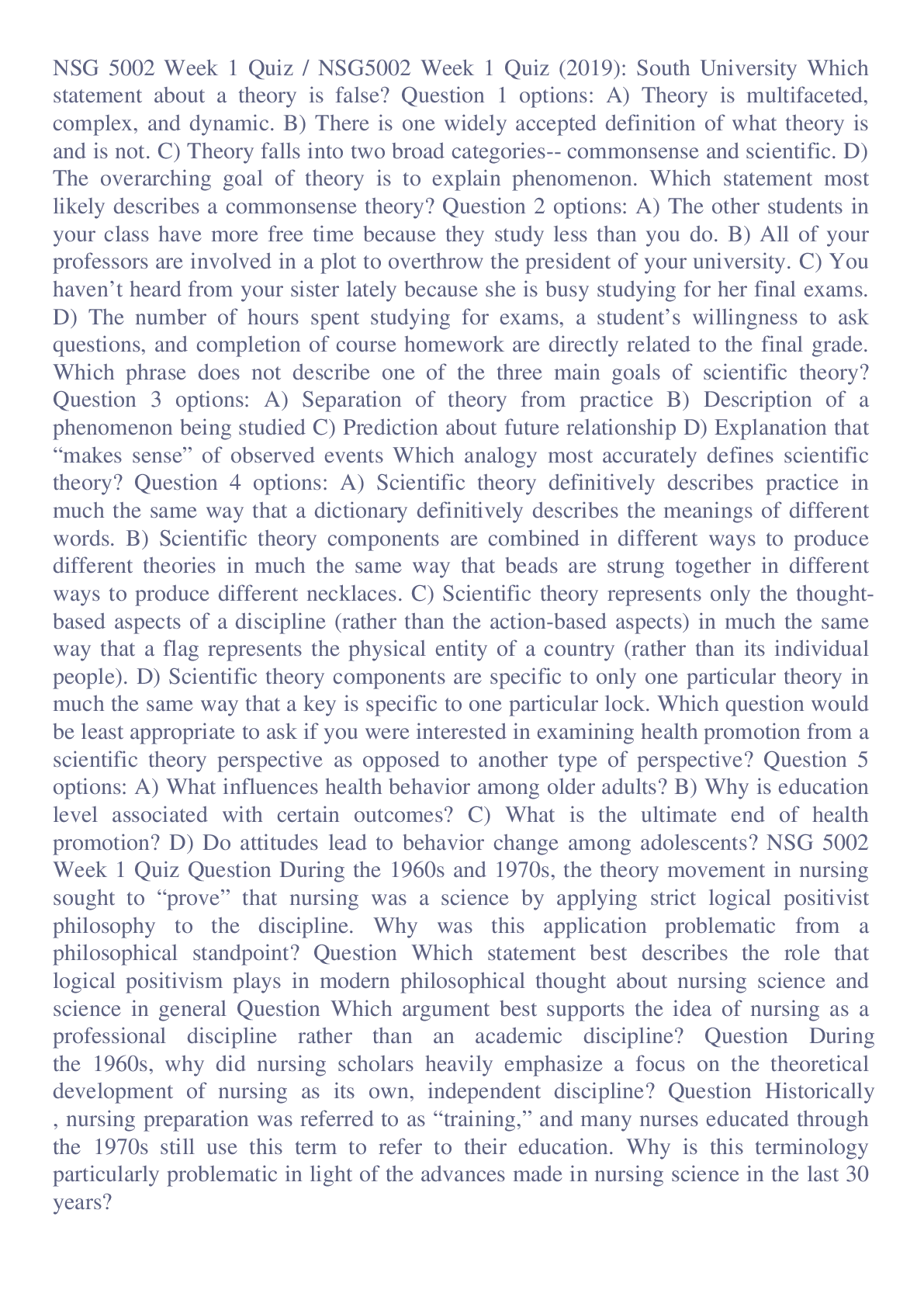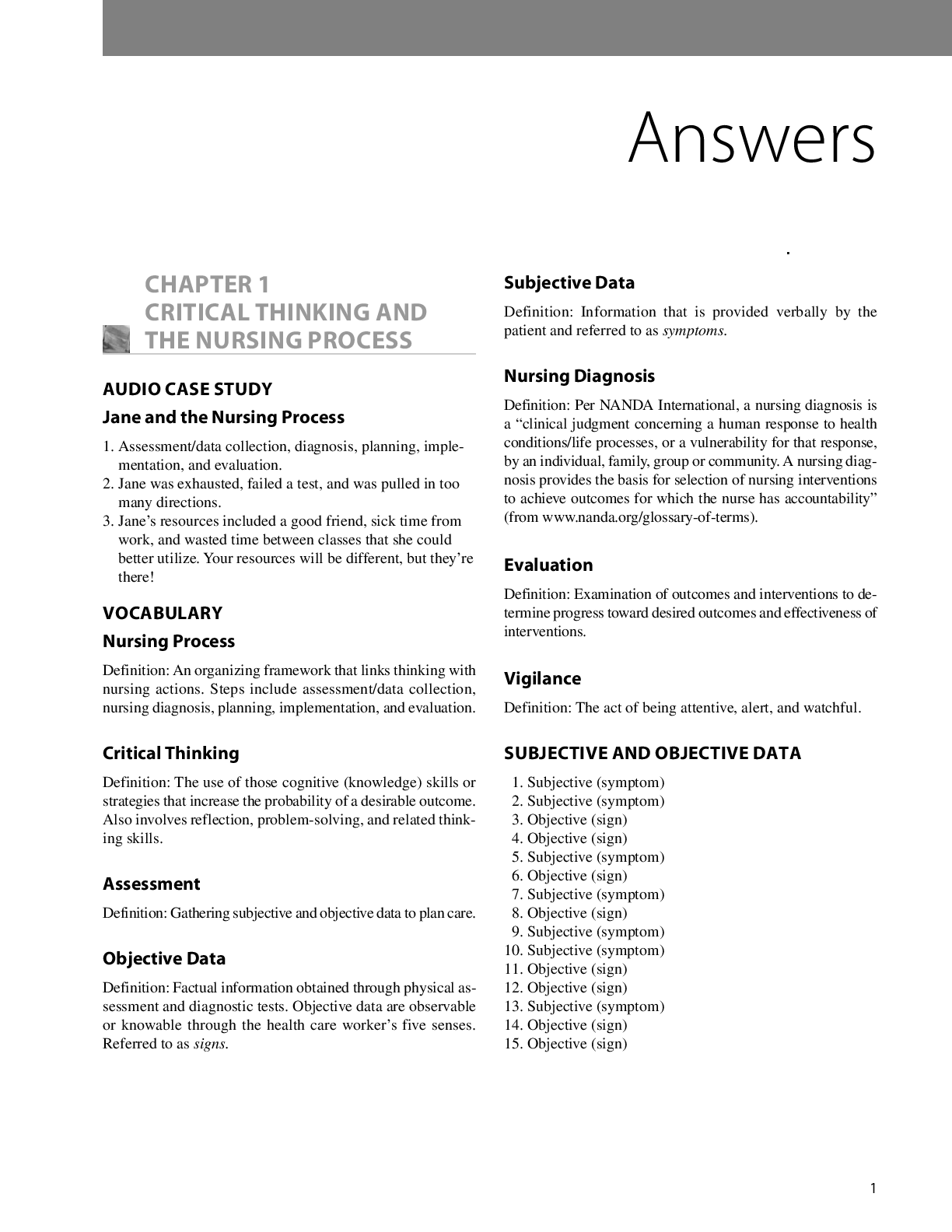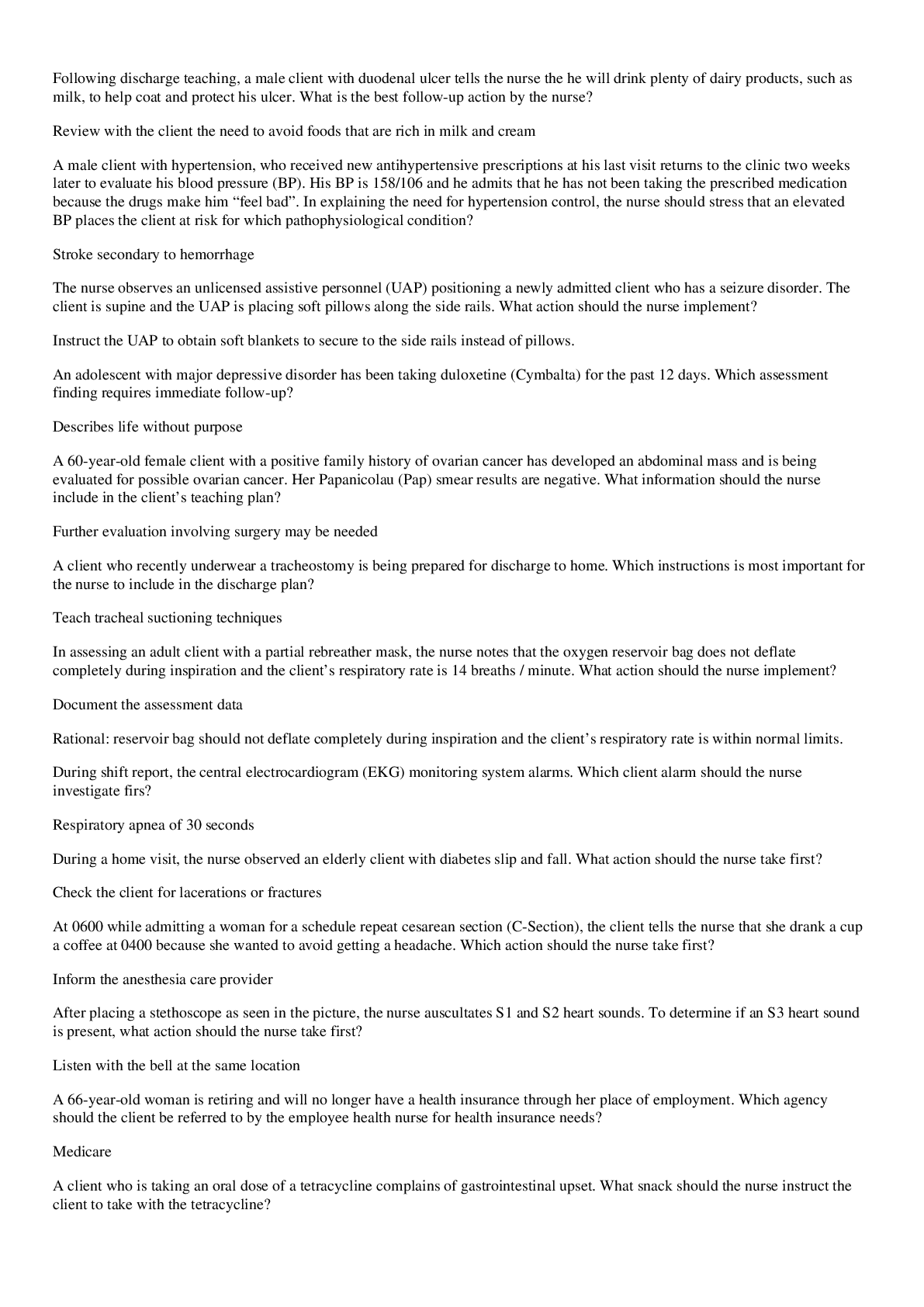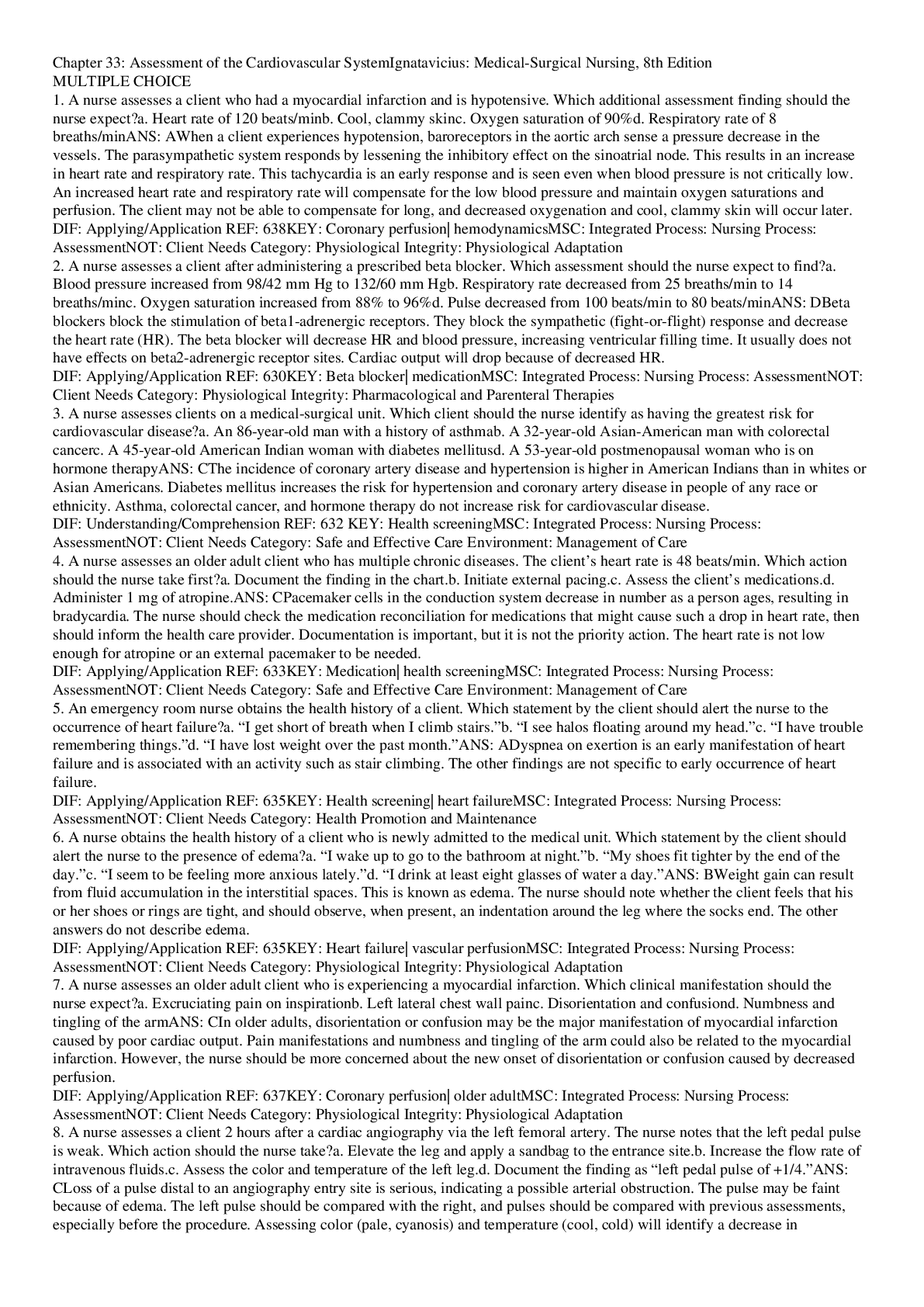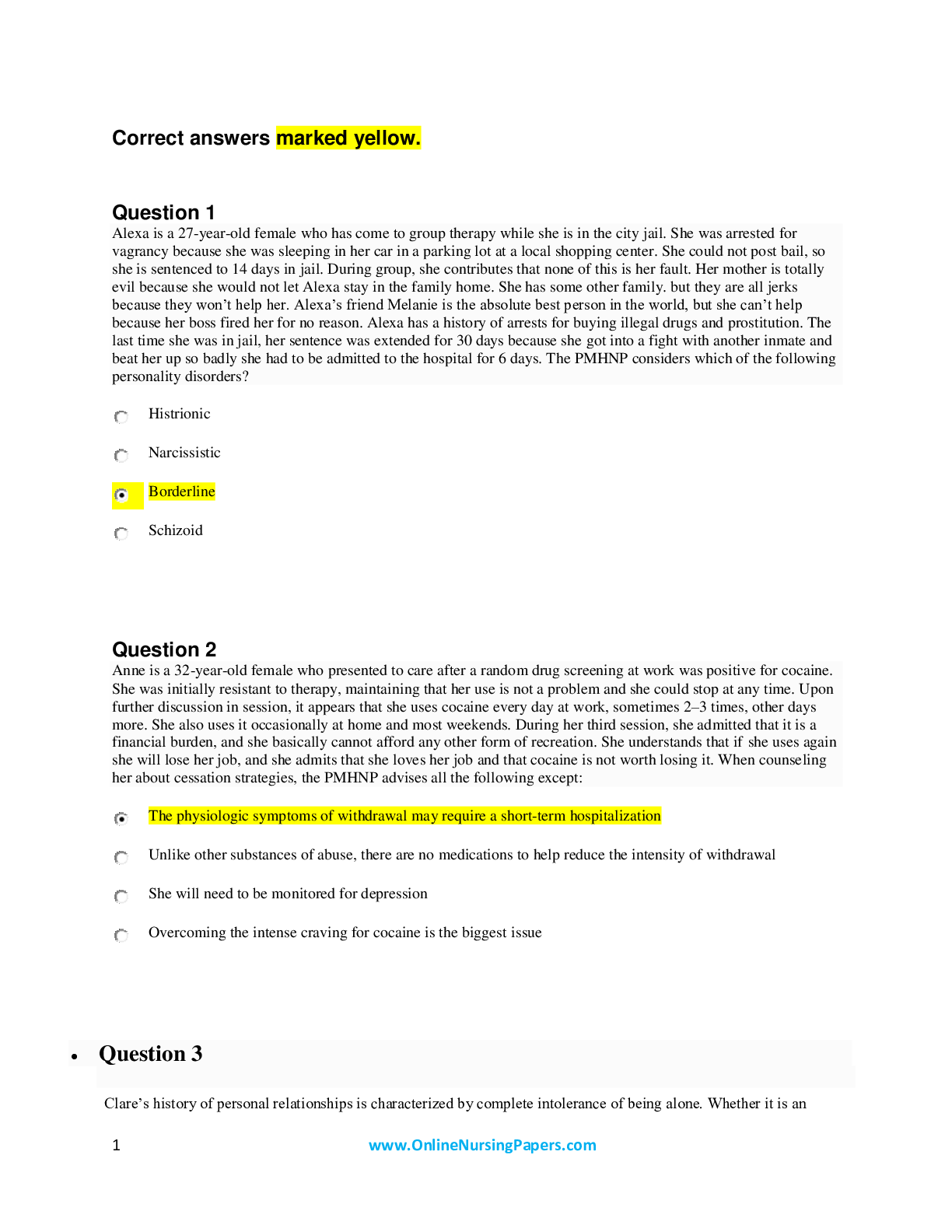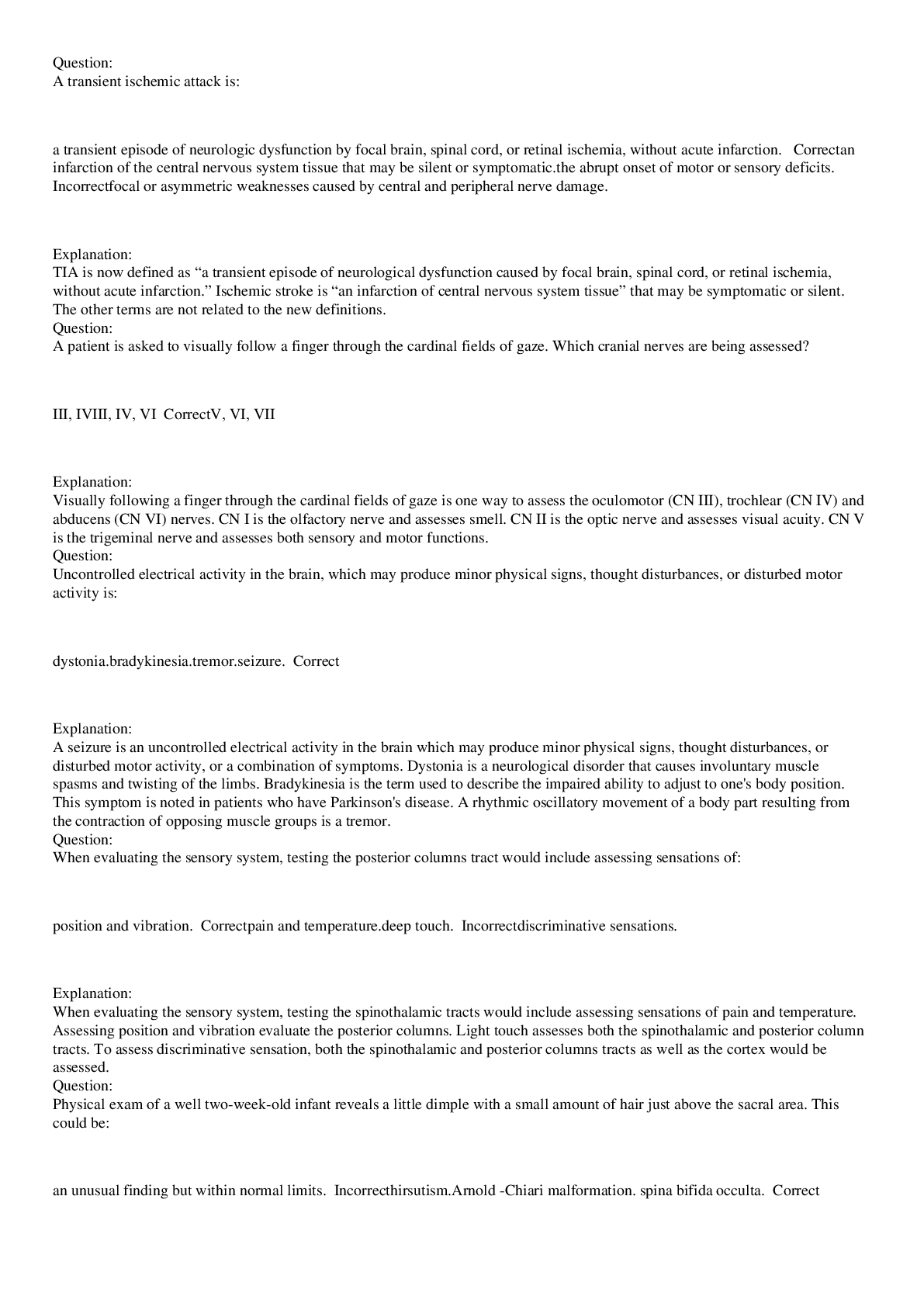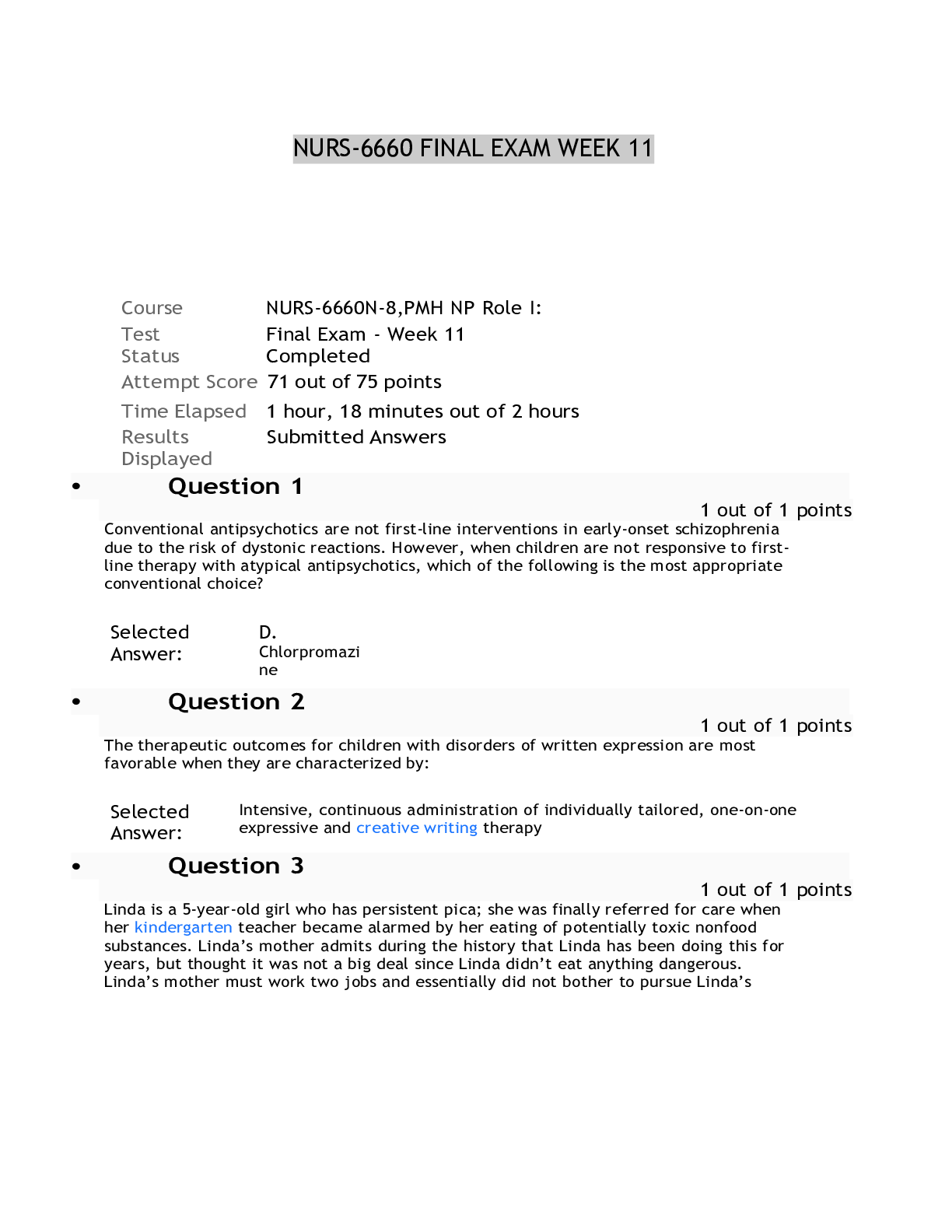Pharmacology > STUDY GUIDE > PHAR 742-Pharmacokinetics Exam 1-Drug Distribution And Protein Binding (ALL ANSWERS CORRECT) (All)
PHAR 742-Pharmacokinetics Exam 1-Drug Distribution And Protein Binding (ALL ANSWERS CORRECT)
Document Content and Description Below
1. Which of the following can be considered true for apparent volume of distribution? a) It is the combined volume of blood, tissue and other organs where drug is distributed. b) It is a true physio... logical volume. c) It is high for a drug, which is mostly concentrated in blood. d) It gives us idea about the distribution of a drug in the body. e) It can be calculated only when drug concentrations in blood and tissue are the same. Explanation: Apparent volume of distribution, VD is not a true volume. Therefore, combining the actual volumes of blood, tissue, and other organs does not give the apparent volume of distribution. Volume of distribution is an indicator of drug distribution throughout the body. Drugs with high VD are more distributed to the peripheral tissues and drugs with low VD are mostly present in blood. Drug concentrations in blood and tissue do not have to be the same to calculate VD. 2. What type of bond is NOT commonly found in protein binding of drugs? a) Electrostatic b) Hydrogen c) Covalent d) van der Waals’ e) Hydrophobic Explanation: Protein binding is generally reversible. Therefore, drugs bind with plasma proteins and come off. Covalent bond is very rare. It is very strong and may make irreversible complex of drug with plasma proteins. An example is the binding of cisplatin with serum albumin. 3. α1-Acid glycoprotein is the most abundant plasma protein in human. a) True b) False Explanation: Albumin is the most abundant protein in plasma. 4. Calculate the percent protein bound of a drug in tissues, if plasma protein binding and volume of distribution of the drug are 20% and 55 L, respectively. The volumes of plasma and tissue are 3 L and 39 L, respectively. a) 15% b) 40% c) 20% d) 60% e) 85% Page 1 of 19 Dr. Nutan®, 2009 Explanation: T ut up BD V f f VV += L f LL ut 39 8.0 355 += f ut = 6.0 Therefore, 60% drug is unbound in tissue. It means, 100 − 60 = 40% drug is protein bound in tissues. 5. Hepatic clearance of a drug is 15 L/hr. Calculate its hepatic extraction ratio considering a blood flow of 1500 ml/min. a) 0.01 b) 0.50 c) 0.99 d) 0.17 e) 0.83 Explanation: EQClH ×= Q = 1500 ml/min = 90 L/hr 17.0 /90 /15 == = hrL hrL Q Cl E H 6. Calculate the concentration of drug with a hepatic extraction ratio of 0.15 in blood entering liver when the concentration in blood leaving the liver is 182 mg/L. a) 158 mg/L b) 182 mg/L c) 209 mg/L d) 155 mg/L e) 214 mg/L Explanation: in in out C CC E − = in in C C /182 Lmg 15.0 − = Cin = /214 Lmg P [Show More]
Last updated: 1 year ago
Preview 1 out of 19 pages
Instant download
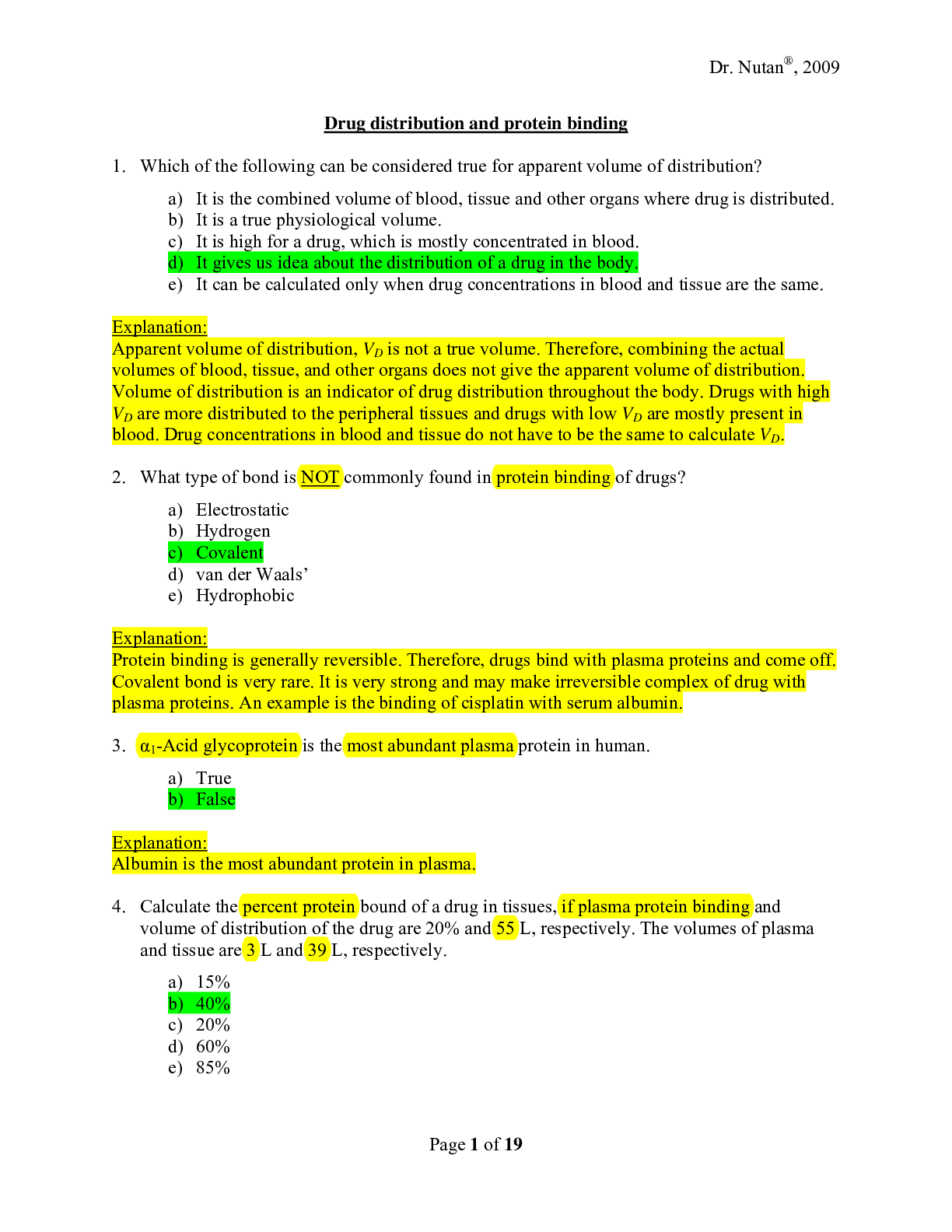
Buy this document to get the full access instantly
Instant Download Access after purchase
Add to cartInstant download
Reviews( 0 )
Document information
Connected school, study & course
About the document
Uploaded On
Jun 29, 2020
Number of pages
19
Written in
Additional information
This document has been written for:
Uploaded
Jun 29, 2020
Downloads
0
Views
164


